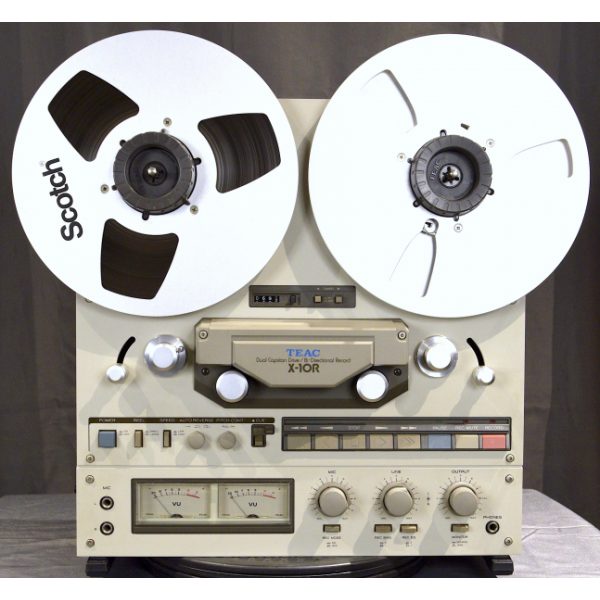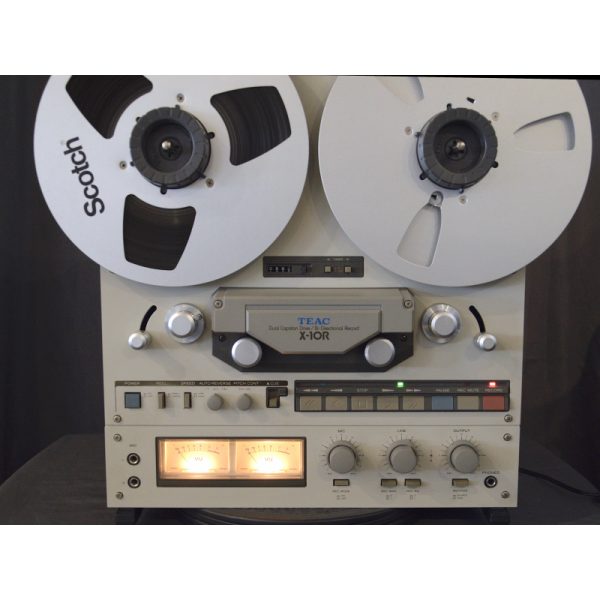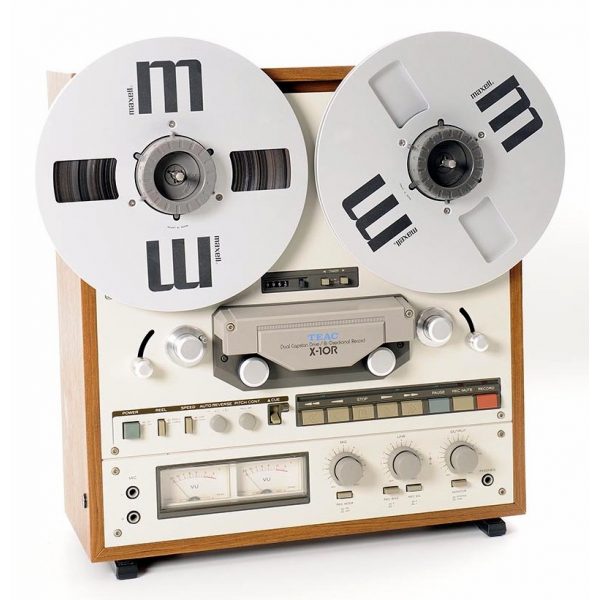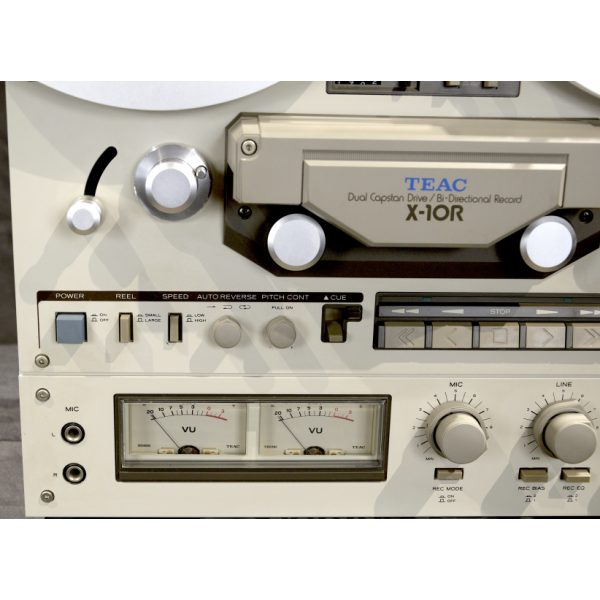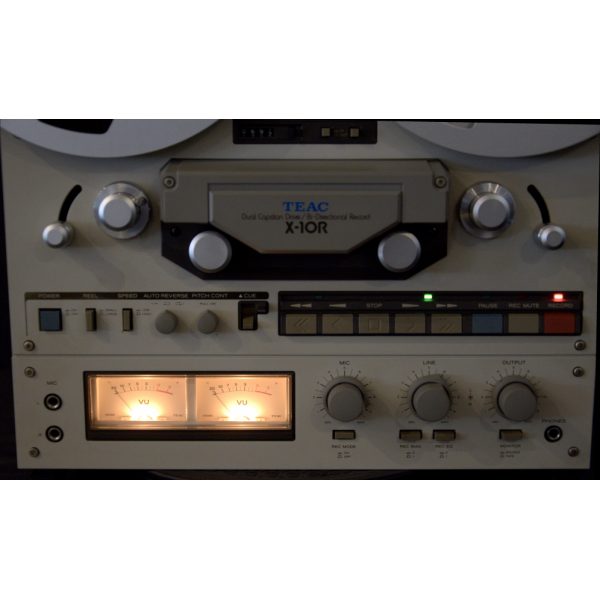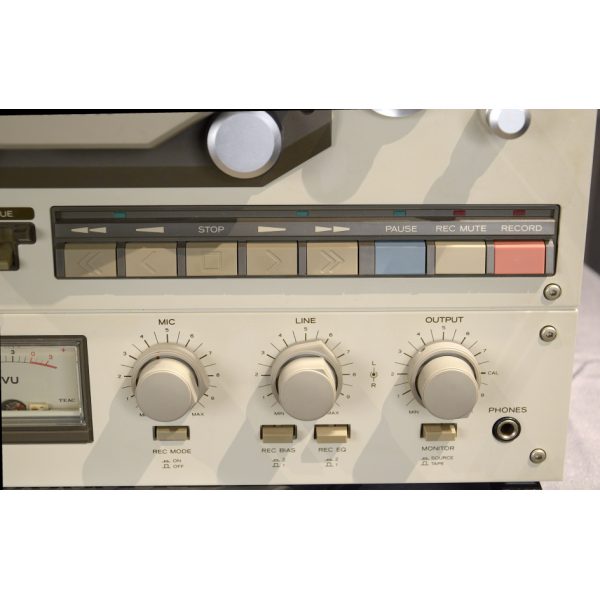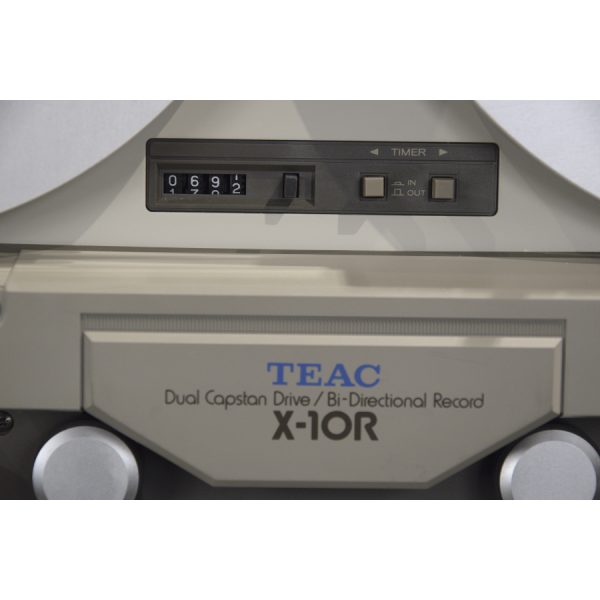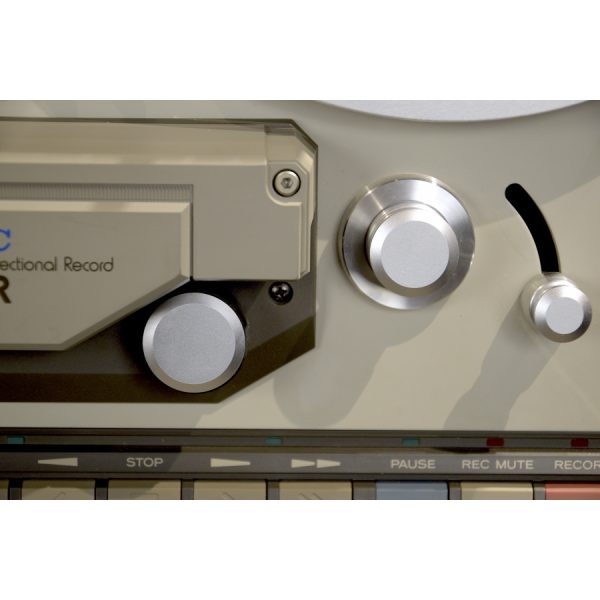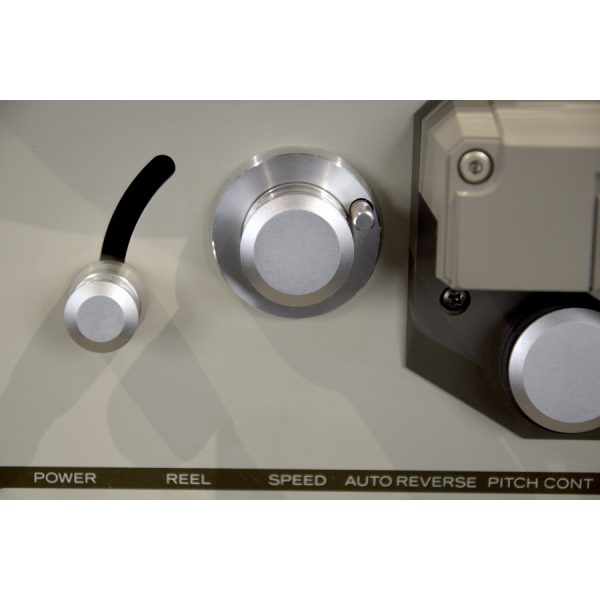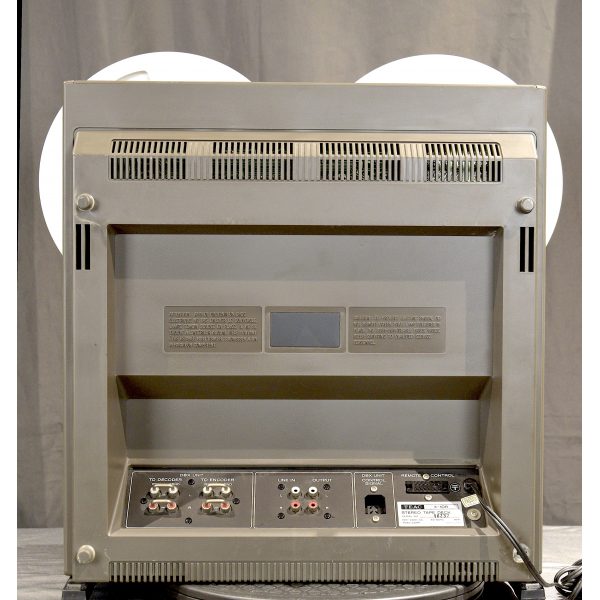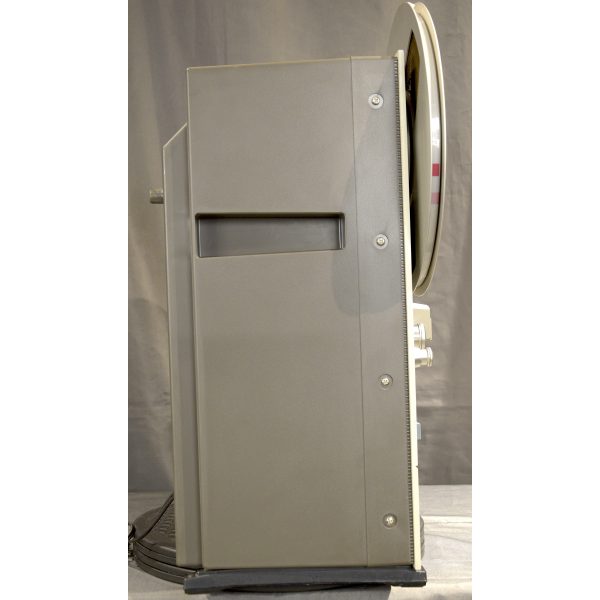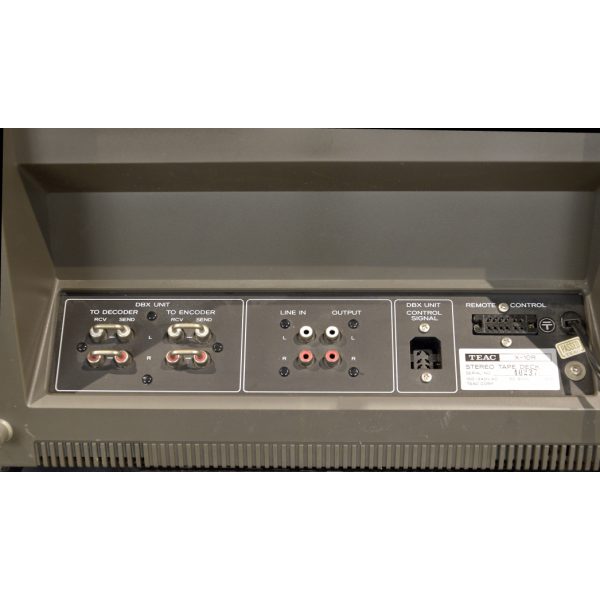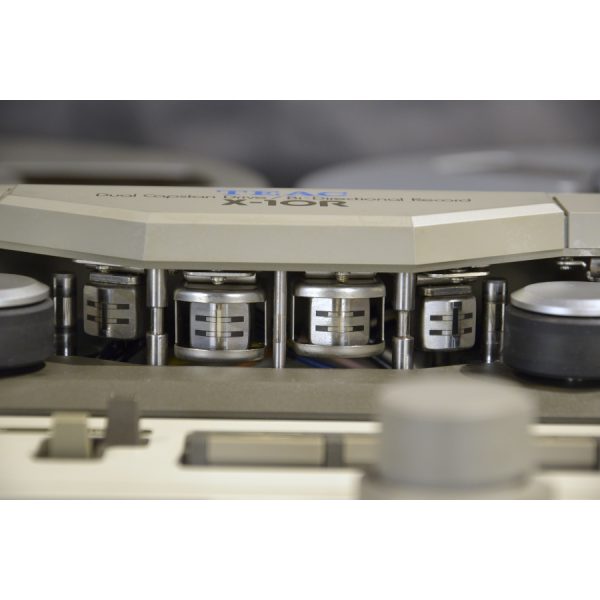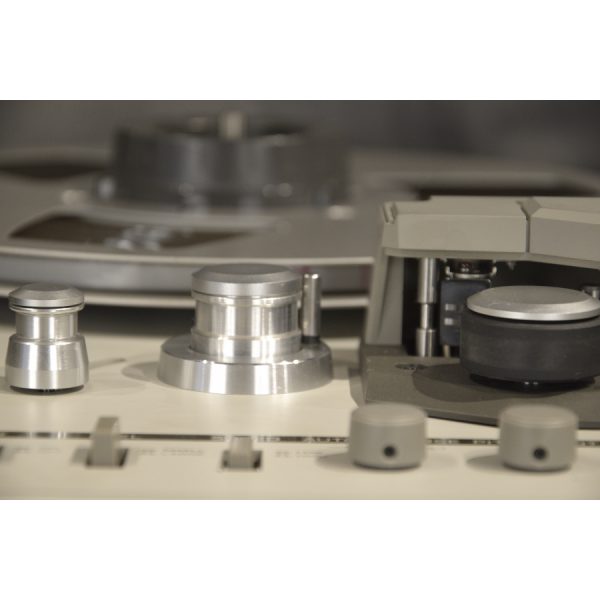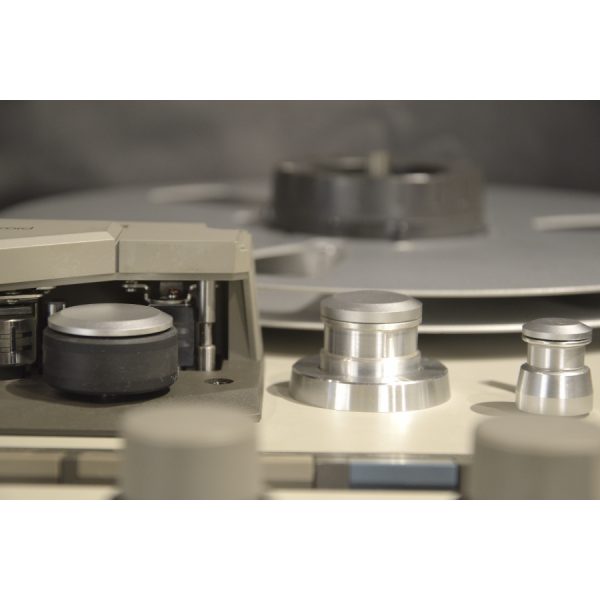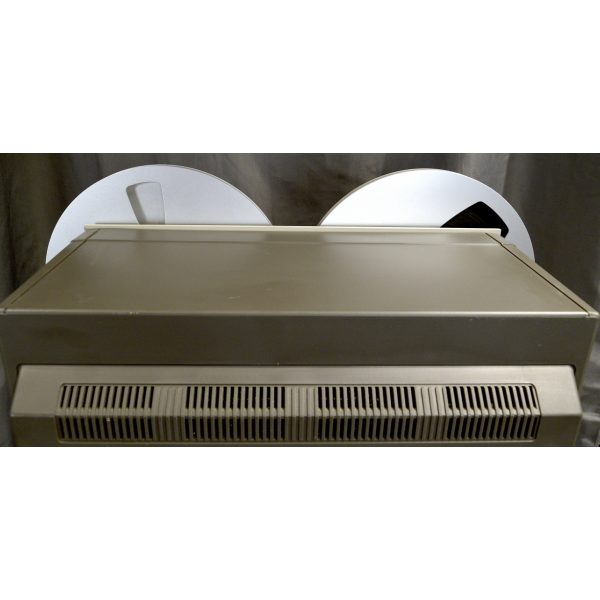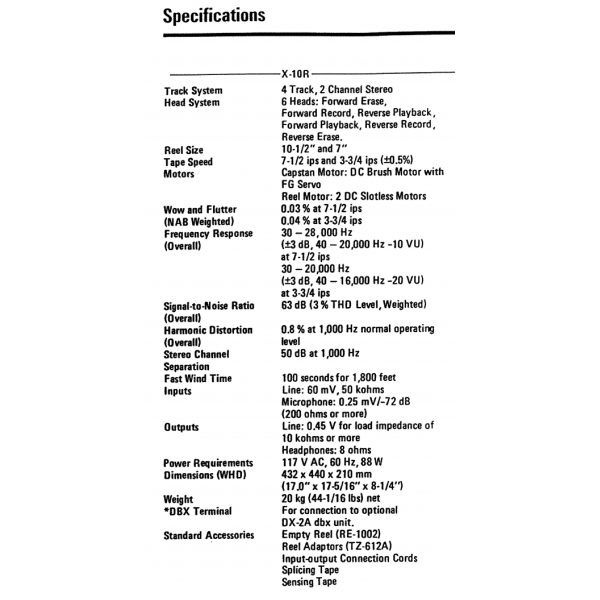TEAC X-10R
4 Track 2-Channel Stereo Reel to Reel Tape Recorder
All pre-owned product is tested in our service department and have been passed for sale... and comes with a 90 day warranty!
Our tech dept has gone thru this and cleaned & demagnetized the tape heads, lubed all rollers, clean & rejuvenate all rubber, inspected & cleaned belts, checked REC and PB both directions. Heads show some wear, but in good condition.
In overall very nice condition! One bumper on back is missing. A few small scratches on the top. Includes a used, but blank tape and two reels (one scotch) as shown on pix.
Original box and packing are NOT available, so this is LOCAL SALE ONLY!
See last image for full specs. White background is a stock pix
Circa 1979-82. Highlights of Special features:
Dual Capstan Closed-loop System: Usually found in the really expensive decks, TEAC opted to use this for the best performance here. How it works: The tape is kept taut across the heads by having two pinch rollers /capstans which rotate at very slightly different speeds: the capstan near the take-up reel rotates faster than the one near the supply reel. When the deck is used in reverse mode, the speed differential between the capstans has to reverse too. TEAC engineers invented a unique way to achieve this . The fly wheels on the two capstans each have two zones of slightly different diameter . When the capstan motor reverses , the drive belt automatically re-positions itself onto the correct areas of the flywheels to maintain the vital speed differential.
Magnefloat Bearings: The bearings used on the capstans play a vital role in maintaining, or degrading, the wow and flutter performance of the deck . Vertical play is the problem and must be eliminated but the methods usually taken to overcome it - springs and other mechanical devices - often only make the problem worse . The Magnefloat method uses the principle that like poles of a magnet oppose to keep the bearings firmly in place and eliminate vertical play with absolutely no mechanical contact. Result - wow and flutter are at an unprecedented low.
Electrical braking: That means that whenever the deck goes from a fast wind mode to any other mode, the tape is slowed down by sending a reverse polarity to the supply reel motor. A magnet to resistive motion sensing device monitors the speed of the tape, and when it is going slowly enough, a signal is sent to activate the mechanical reel brakes. Because the tape is only going slowly when the brakes are activated they can be very much lighter than conventional brakes and enable the reels to be easily turned using only one hand.
Six Heads: Every quality tape deck has an erase, record and playback head - three in all. The X·10R has six heads because it is like two separate tape decks in one; full erase, record, playback and monitoring facilities in the forward direction and full erase, record, playback and monitoring facilities in the reverse direction. The two sets of heads have their track positions accurately aligned, one set for forward record and play and one set for reverse record and play.
Four Track Heads: The X-10R has quarter track heads. That means each track recorded occupies approximately 1 /4 of the track width. The two tracks of a stereo recording therefore occupy only half the tape width, enabling the tape to be recorded in the reverse direction. On ordinary decks, the user has to turn the tape over at the end of the tape, but with these decks the "other side" can be recorded by simply using the bidirectional record facility and recording on the tape in the reverse direction.

